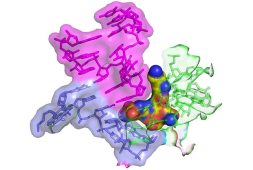
If you’ve ever been to a tropical country, then you know that mosquito and their irritating bites can be a major issue. Aside from these tiny bugs being carriers of certain harmful diseases, such as malaria, dengue fever, Zika, Chikungunya, and the West Nile virus, they land thousands of people in the hospital while sadly killing some as well. Despite a number of proposed solutions, like genetic engineering to chemical interventions, the battle against these disease-spreading insects has seen limited success.
However, a pioneering entomologist – John Beckmann – has recently unveiled a groundbreaking development that could possibly revolutionize fashion, but more importantly, potentially save countless lives.
Beckmann’s creation involves the use of Spandex-polyester weave that has been found to effectively repel the proboscis – simply known as the mouth – of the mosquito. This means that in such tropical countries where mosquito-borne diseases have wreaked major havoc, this fabric is set to be a major game-changer. Because the fabric is created in such a way that the mosquito cannot penetrate it, Beckmann’s team has basically created a simple yet highly effective solution to combat these relentless pests.
In an interview with Fast Company, Beckmann explained, “Knitting is essentially like tying little knots—you’re making loops, and you’re wrapping loops through loops. If you do it in the right geometric ways, you can create a chainmail effect at the microscopic level.”
To the naked eye, the mosquito’s proboscis may seem like a needle-like appendage. However, Beckmann emphasizes that this tiny organ is far more advanced than one would think. Equipped with saw-like bladed segments, microneedles that vibrate like a drill, and the ability to bend at a 90-degree angle, the proboscis possesses formidable capabilities that allow it to penetrate most fabrics with ease. Overcoming this obstacle required careful refinement and countless iterations of the fabric.
Another challenge, according to Beckmann, was creating a weave that wasn’t hot since the material would mostly be used in tropical countries where mosquitos are rampant. He explained, “You want to change the path of the hole just enough so that the mosquito can’t get through, but yet it provides enough airflow that it’s comfortable.”
Beckmann and his team finally achieved success after numerous trials, tweaking and refinement of their product. By the time they were done, one of his graduates from Auburn University in Alabama likened the finished fabric to that of the leggings from the ultra-popular sports brand, Lululemon. With this achievement, the team has shown that fashionable clothing can coexist with functionality, style and best of all, protection against mosquitos that carry life-threatening diseases.
The team submitted their paper which spoke about their findings and test results of how they tested out a variety of weaves by putting a sleeved arm into a glass box filled with mosquitos to check and count how many bites they got.
Moving forward, Beckmann and his team are planning to find ways to make the material even more comfortable. Then once they’ve perfected it, the hope is to release an entire clothing line, while also licensing the weave to other outdoor companies that may also want to design their own clothes with the fabric.
Beckmann also shares that when it comes to the other types of solutions that governments have come up with to “fix” this problem, they tend to overthink it and end up with massive efforts that end up as complete oversight, he tells the Fast Company.
“More and more, I’ve just been thinking realistically: What do I think can feasibly stop vector-borne disease? I think people, and researchers especially, overthink problems and engineer the most complicated solutions possible. I honestly think the simplest solution is probably the best one,” he says.
And what may seem like the unlikeliest solution, may truly just be the best one yet.



